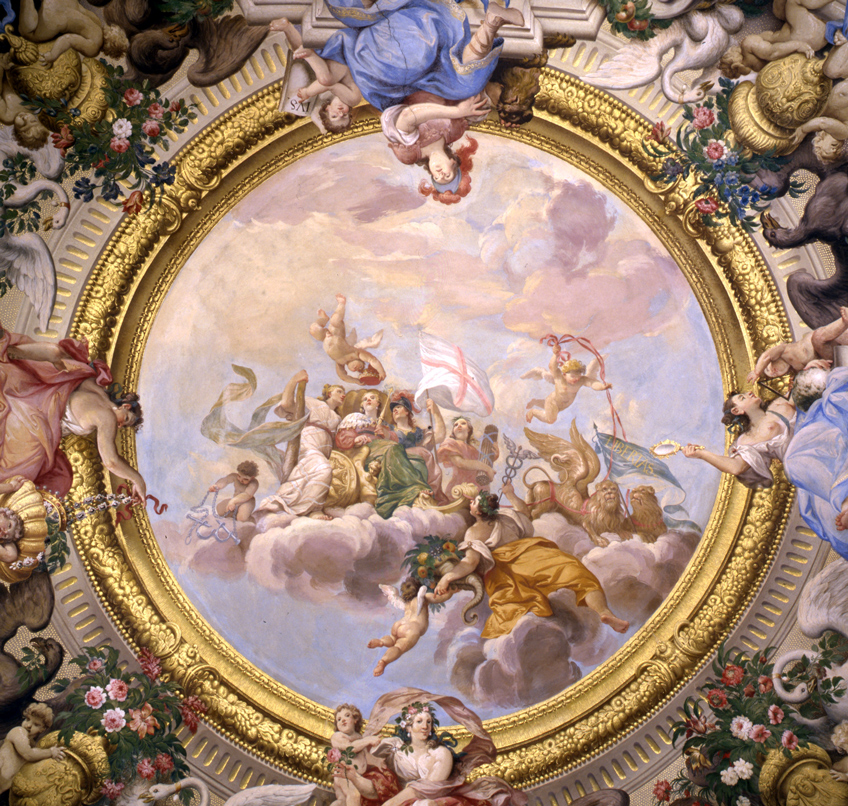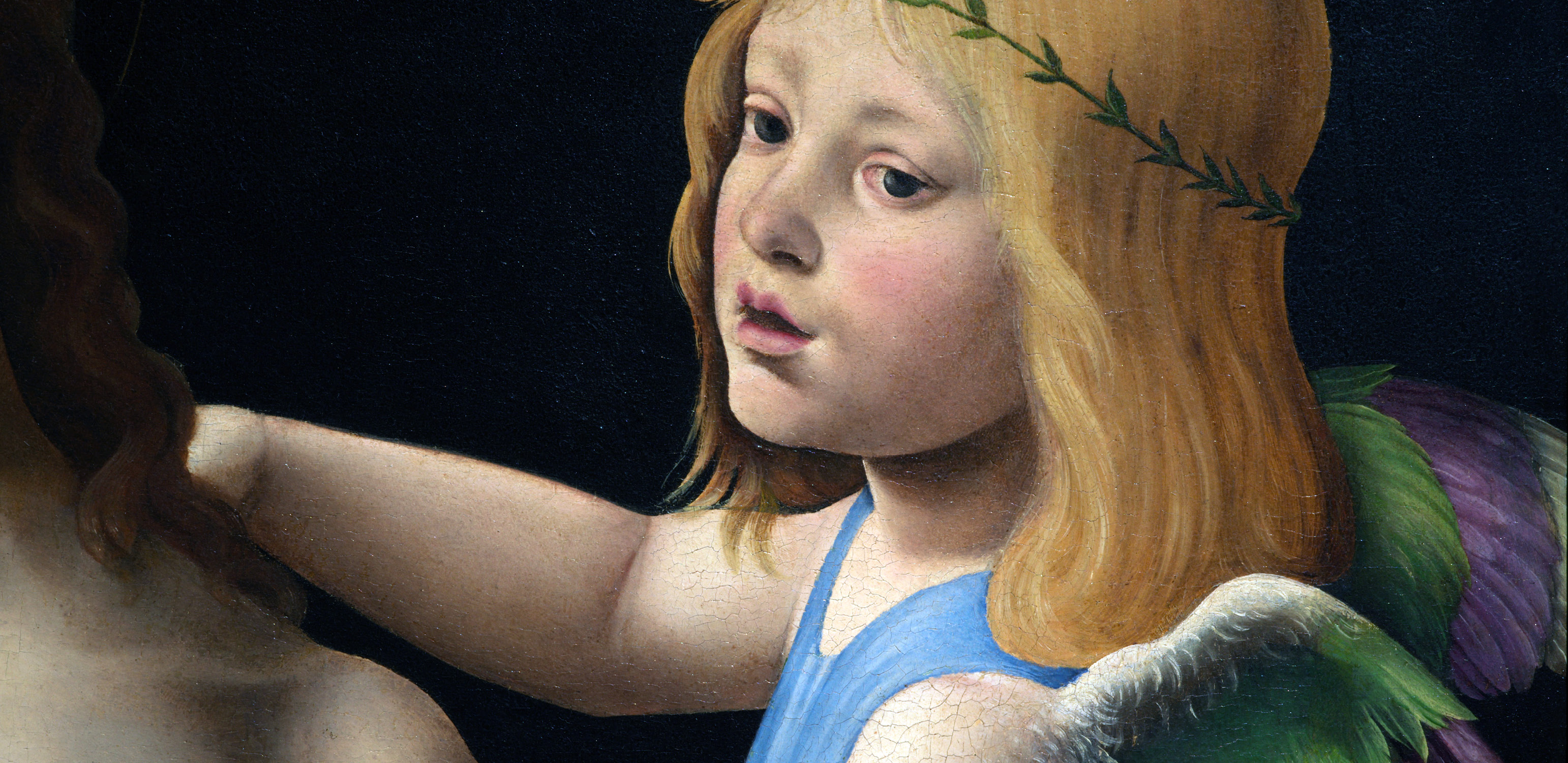
Odoardo Pepoli dies in 1680 and it's his nephew, Ercole, who takes charge for the Palace works. In 1683 he entered the Bologna Senate and from 1686 was created Patrician of Venice. This event is probably the subject of the fresco of the room adjacent to the Main Hall realised by the Rolli brothers in 1690. The Rolli, Canuti's pupils, were Giuseppe, author of the figures and Antonio, the "quadraturista". The depicted scene is the Triumph of Felsina ("Felsina" is the old, etruscan name of Bologna), an allegorical subject regarding the city of Bologna and his Government.
The young blond lady which gos on a chariot hauled by the Venice winged lions is the Bolognese Aristocracy, crowned by a putto with the red "corno", the headdress used by the Venetian Doges. At her side some handmaids carry on symbols of State Power: the Roman fasces, the Hercules club, the Bologna flag (white with a red cross and the writing LIBERTAS, "Freedom"), while a putto breaks the chains of the Pope domination. At the time Bologna had a mixed government, leaded by a Popo governor ("Legato") and by a local Senate, composed by some members of the town Aristocracy.
Below the chariot, the Public Happiness (with the Horn of Plenty and the Caduceus, symbol of Peace) shows to Felsina a young lady that can be interpreted as Love, for the rose in her hand, or the Pepoli House, for the araldic Swan on her sandals. The other female figures on the frame, among white swans and black eagles are completing the political meaning of the fresco, stressing the virtues of the Bolognese Aristocracy: The Justice (identified by the IUS (latin for Law) written on the book leading the Strenght, the Generosity, showing a necklace of precious black and white stones, and Science, with the mirror, the globe and the triangle.









